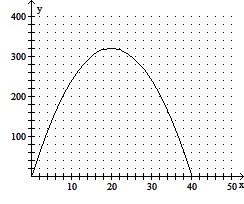Solve the problem.A rock is thrown vertically upward from the surface of the moon at a velocity of 32 m/sec. The graph shows the height y of the rock, in meters, after x seconds. Estimate and interpret the turning point (the point at which the graph reaches its maximum value).
A. The turning point is at approximately (20, 320). This is the point at which the rock reaches its maximum velocity and starts to slow down.
B. The turning point is at approximately (40, 320). This is the point at which the rock reaches its maximum height and starts to fall back towards the surface of the moon.
C. The turning point is at approximately (20, 320). This is the point at which the rock reaches its maximum height and starts to fall back towards the surface of the moon.
D. The turning point is at approximately (40, 0). This is the point at which the rock reaches the surface of the moon again.
Answer: C
You might also like to view...
Find  by using the Chain Rule. Express your final answer in w = y2 - x ln y; x = st, y =
by using the Chain Rule. Express your final answer in w = y2 - x ln y; x = st, y = 
A. s
B. s2
C. s
D. s
Multiply or divide.
A. -0.8 B. -7.2 C. 0.8 D. 7.2
Solve.A machinist receives a sketch of a part she must make as shown. If the indicated angle NOP is precisely half of angle NOQ, find ? NOQ. 
A. 30°55'8" B. 32°5'12" C. 31°45'28" D. 29°50'6"
Find a formula for f-1(x).f(x) = (x - 8)2, x ? 8
A. f-1(x) = 
B. f-1(x) = - 
C. f-1(x) = x2 + 8
D. f-1(x) =  + 8
+ 8